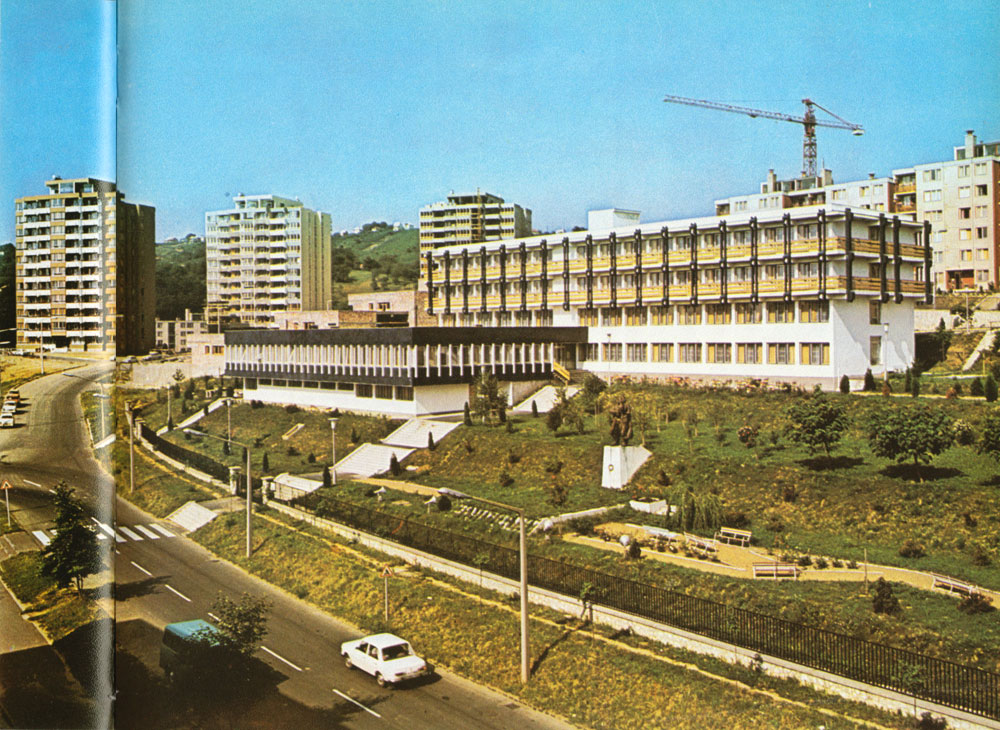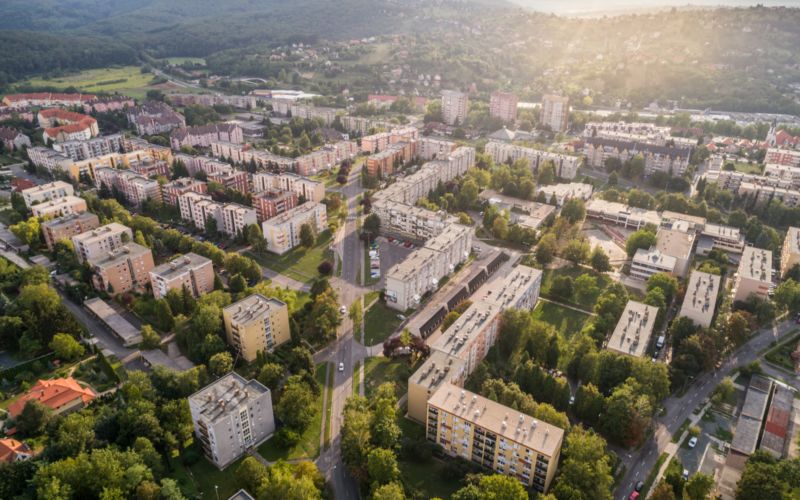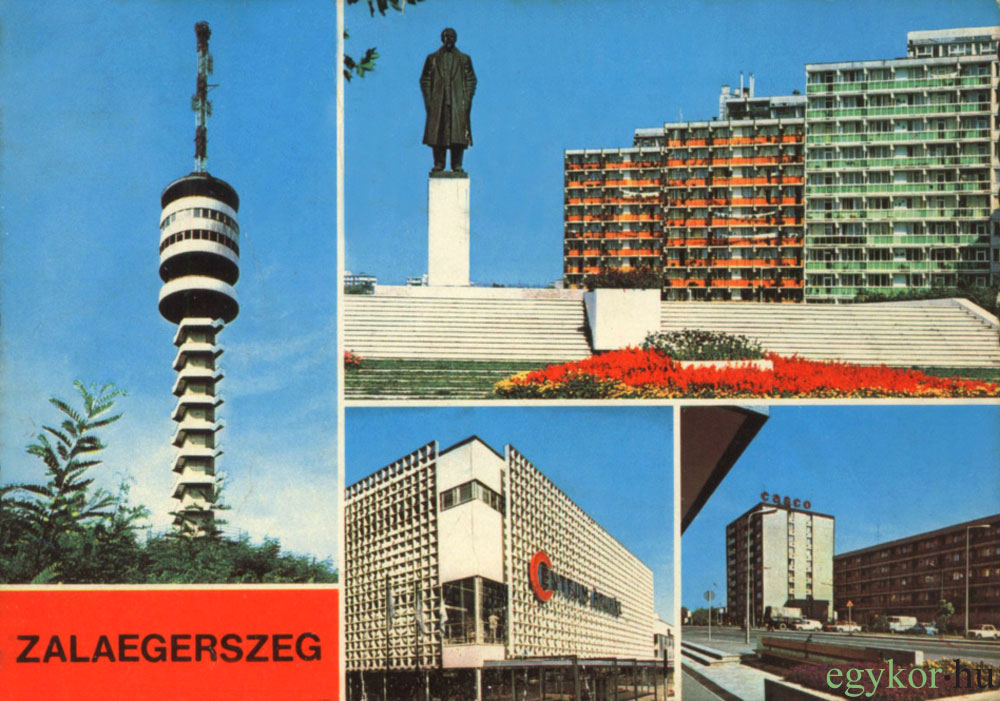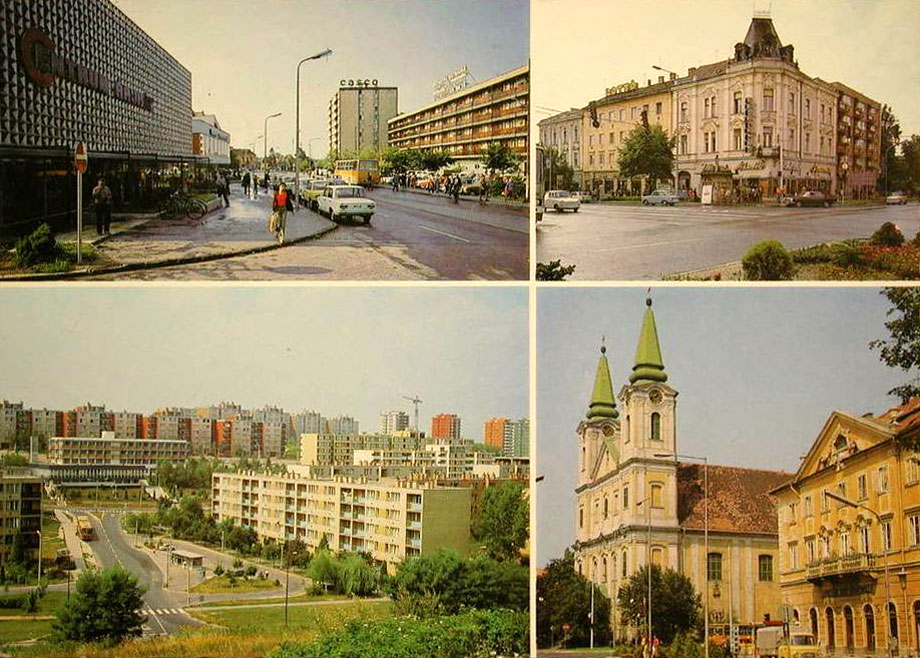|
|
Zalaegerszeg, Hungary, Europe |
|
|
|
|
|
|

County Party Committee
Education Directorate
source: https://egykor.hu/zalaege
rszeg/egeszsegugyi-foisko
la/2543

Overview
source: https://szallas.hu/zalaeg
erszeg

Postcard, 1975
source: https://egykor.hu/images/
2010/original/zalaegersze
g-zalaegerszegi-latnivalo
k-_8.jpg

Postcard, 1970s
source: https://egykor.hu/images/
2010/original/zalaegersze
g-zalaegerszegi-latnivalo
k-_6.jpg
|
The 1950s brought the most serious changes in the history of Zalaegerszeg. The largest light industry investment in the first five-year plan was the construction of a clothing factory in Zalaegerszeg, which was primarily based on free female labor. The stock of oil fields discovered in the area in 1952 was also immediately mined, and in 1953 a cheese and butter factory was built in the city. Zalaegerszeg – Zalaszentiván was mained according to the needs of the industryrailway section. The huge industrial investments had a high labor requirement, which was met mainly from the surrounding villages. In a short time, daily commuting from the surrounding villages became massive, as it was almost impossible to get housing in the city at that time. Thus, it was not uncommon for retirees, the inactive, but mostly those considered anti-class, to be “persuaded” to move out of the city.
However, the great industrial boom could only be experienced by those living in the city as a setback. The construction industry served only the interests of large investments, so housing conditions for the civilian population continued to deteriorate. Infrastructure investments have also not been made in the city, with shops queuing in line, providing a smaller and smaller supply to city dwellers.
Zalaegerszeg also took an active part in the 1956 revolution . The movements in 1956 . began on October 26 , as a result of which MDP leaders fled to Körmend . Thereafter, until the November 4 attack by Soviet troops , the city was ruled by the Revolutionary Council. [42] [43]
On December 11, 1956, the workers of Zalaegerszeg joined the national strike organized by the Central Workers' Council due to the fire in Salgótarján . The movement took place on December 12 on Kossuth Lajos Street. Thousands of crowds gathered in front of the post office, with Csepel trucks trying to stop Soviet tanks from making their way. The protest mass was eventually dispersed by the use of tear gas and tanks. The next day, the garment workers called the women and the garment workers to protest. The women gathered around the statue of László Csány and then in the city center. They put on black clothes or put on black ribbons, which is why the demonstration is also called a mourning veil. Eventually, Soviet tanks and carmakers disbanded the crowd on this day as well.[44] [45] [46]
source: https://hu.wikipedia.org/wiki/Zalaegerszeg |
|
2008 - 2024 disclaimer
|

